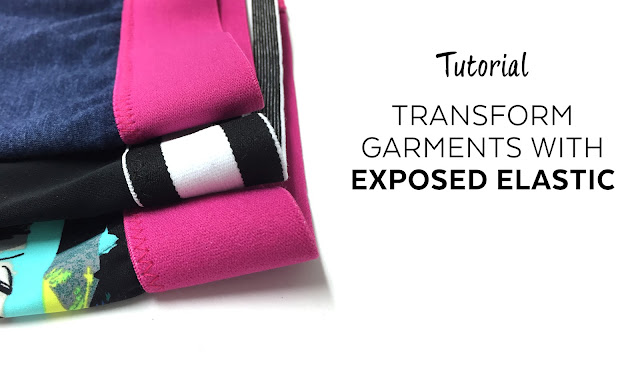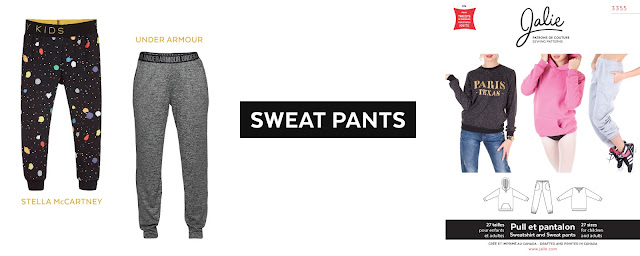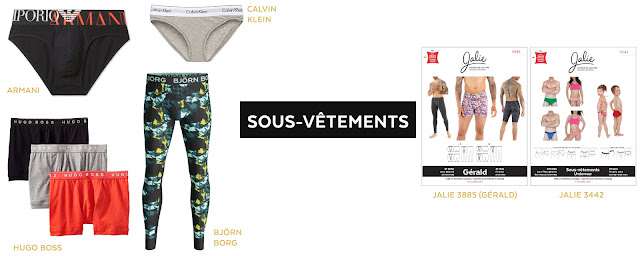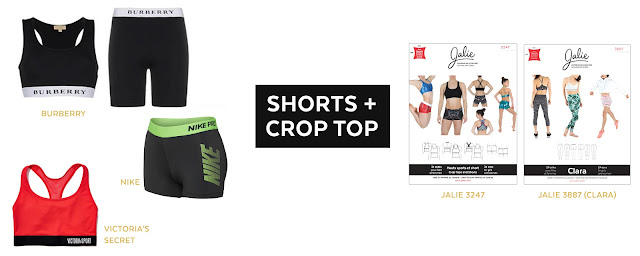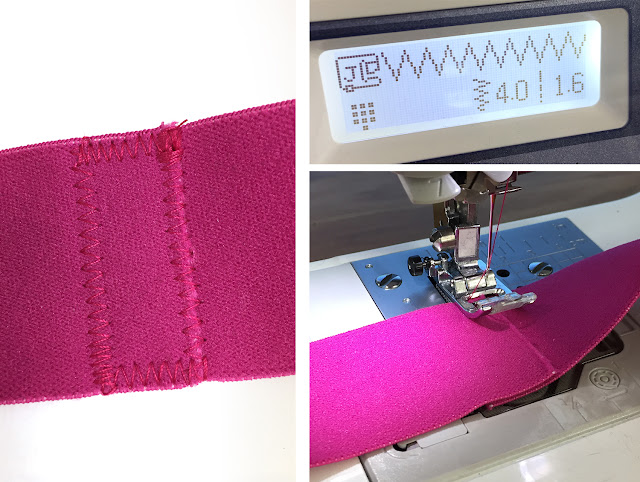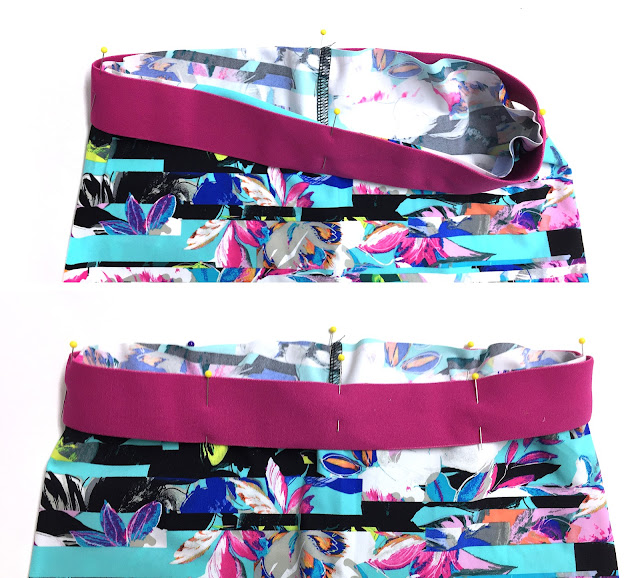Show off Your Elastics!
The trend is getting more and more popular and goes far beyond the men's underwear world! You can use a wide exposed elastic on pretty much anything: shorts, top, leggings... Have fun!
INSPIRATION / COMPATIBLE PATTERNS
You are a fan of the matchy-matchy sportswear kits? Use the waistband elastic to finish the bottom edges of a crop top / sports bra! Pattern 3247 includes both the tops and shorts. Make sure you use view D, which is the one designed for encased elastic on which the technique we show below can be used.
BEST PLACES TO BUY WIDE ELASTIC
Finding soft elastic in the color / style you want might be the trickiest job. Your husband has an old pair of boxer briefs, the fabric is disintegrating but the elastic is still as good as new? Unstitch it and keep it in your sewing stash!
Wide elastics are more and more common in chains like Fabricville (Fabricland), Club Tissus, JoAnn and even Walmart. They come and go, when stock is available. Same for smaller local stores. Sometimes they get their hands on a small overstock from a local designer and have limited quantities. This means that whenever you see something you like, get it while you can!
Fore more selection, you will have to look online. Look for "waistband elastic" on Google and you will find elastic in different widths, styles and textured (jacquard, solid, plush...).
Here are some websites where we found interesting options:
Etsy
Bra-Makers
Emerald Erin
Aliexpress (allow many weeks for delivery)
PREPPING YOUR PATTERN
Before you start sewing, you need to adjust the seam allowance. The pattern was drafted with extra fabric to create a casing. You have to remove it.To do so, look in the elastic chart to see for which elastic width was taken into account. On the Clara leggings (view B), the allowance is for a 2 cm (3/4'') elastic. Therefore, we trace a line 2 cm (3/4'') along the top edge of the leggings (where the elastic will go) and then cut to remove the extra paper :
 |
| (don't throw that piece away! You will need it if you want to eventually make a pair with encased elastic!!!) |
Cut your fabric with that trimmed paper piece and cut your wide elastic to the length indicated in the chart for the size you are making. Assemble the garment, following the pattern instructions. For leggings, attaching the elastic will be the second-to-last step (before hemming).
SEWING THE ELASTIC
Overlap the ends of the elastic by approximately 1 cm (3/8''). Sew with a zigzag stitch as shown in the photo, starting along the raw edge of the elastic. This technique keeps the layers to a minimum and wraps the end of the elastic.Stitch on the elastic, along its bottom edge. You can use a zigzag stitch or cover stitch (or double needle) if you don't like the look of zigzags. Stretch the elastic between the pins so the fabric is flat against it. DO NOT stretch the fabric.
Here are quick links to the patterns mentioned in this post with which you can use this technique:
← 3242 / Mens trunk underwear / Video Tutorial The story behind the Marie-Claude Pattern →




